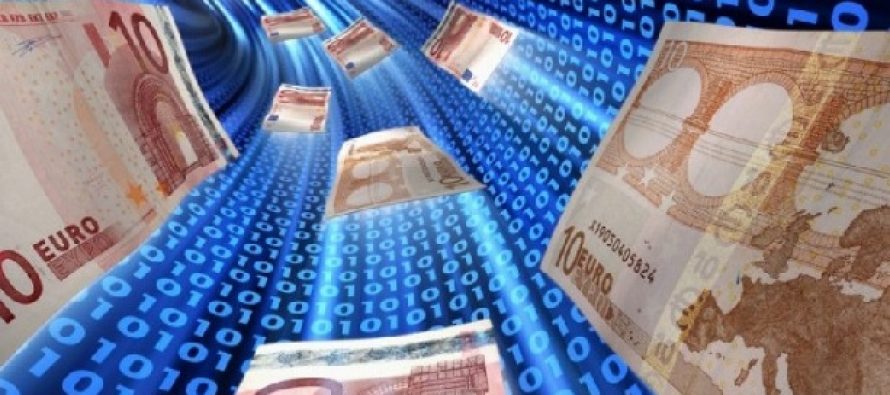National currency’s strengthening: Economy expert warns of dangerous spiral

Story Highlights
- The sharp strengthening of lek has hit Albania’s Eurozone destined exports, local producers facing tougher competition from now cheaper imports as well as half of the country’s household and business savings and poor households relying on remittances from family members
Related Articles
TIRANA, June 5 – Money in circulation registered a sharp decline in the first four months of this year, indirectly explaining the considerable strengthening of Albania’s national currency against Europe’s single currency in Albania’s highly euroised economy with a series of negative effects for the country’s exporters, local producers and savers.
The broadest measure of money supply published by the central bank, M3, dropped by about 36 billion lek (€285 mln) from December 2017 to April 2017, in the sharpest contraction for the first four months of a year since 2002 when central bank data is available.
Economy expert Selami Xhepa has told a local magazine he finds the monetary developments quite surprising and says Albania’s central bank should intervene to increase money supply before negative consequences escalate due to the ongoing strengthening of the national currency.
Europe’s single currency hit a new 10-year low of 124.88 lek this week, having depreciated by about 5 percent compared to the mid-January peak level of about 134 lek for this year and is about 11 percent lower compared to mid-2015 when the euro’s five-year reign of about 140 lek came to an end.
The U.S. dollar, whose weight on the Albanian economy is much lower compared to the euro, has also depreciated by about 5 percent during the first five months of this year and currently trades at a three-and-a-half year low of 106.48 lek, compared to the early 2017 almost record high of about 129 lek, according to Albania’s central bank.
The sharp strengthening of lek has hit Albania’s Eurozone destined exports, local producers facing tougher competition from now cheaper imports as well as half of the country’s household and business savings and poor households relying on remittances from family members.
“I find the monetary developments quite surprising and unusual. I think the sharp decline in the money supply measured by all monetary aggregates, either the monetary base and the well-known M1, M2 and M3 indicators runs against the logic of the needs of an economy that requires expansionary monetary policies,” Xhepa has told local Monitor magazine, adding that both the European Central Bank and the U.S. Federal Reserve have sharply increased money supply over the past five years.
“Demand on foreign currency has fallen as economic agents are being afraid of this almost free fall in euro's value and rushing to exchange large amounts in order to minimize losses from possible huger losses they expect in the future,” he adds.
A former politician and renowned economist, Xhapa heads the “Pashko” European Institute, a Tirana-based think tank named after Gramoz Pashko, a late Albanian economist and politician who led the country’s shock therapy in the early 1990s when the communist regime and its planned economy collapsed.
“Considering that more and more stakeholders are acting this way, demand for lek should logically increase at a time when demand for foreign currency is almost inexistent with the exception of normal constant demand that importers or those who buy services abroad have,” says Xhepa.
“In this way, logic takes to the conclusion that under the conditions of a strong demand for money, and because the market is rushing toward lek, the M1 money supply [which covers cash in circulation plus demand deposits] should expand. The fact that the M3 broad money has narrowed by about 36 billion lek [€285 mln from December 2017 to April 2018] makes one believe that there is no doubt that the reduction of the money supply in the exchange rate is crucial,” he adds.
A dangerous spiral?
Albania’s central bank has been keeping its key rate at a record low of 1.25 percent since mid-2016 in a bid to promote sluggish credit and consumption as inflation rate remains considerably below its 3 percent target estimated to have a positive impact on the country’s economy.
“I think developments in the exchange rate could enter a dangerous spiral and with grave consequences for important segments of the population. Common savers and those who have saved their children's remittances are facing a sharp decline in the value of their savings, of course should they be forced to spend those savings in Albania. Exporters receive a very harsh blow and I can say for sure that some of them will not manage to adjust costs to handle the effects of the euro's depreciation. That's why some of them will end up in bankruptcy,” says Xhepa
“There will also be negative effects for other domestic producers who compete with imported products who have become cheaper. The result is bankruptcies again,” he adds.
Albania’s central bank and the Albanian government argue the strengthening of the national currency, lek, is a result of the Albanian economy recovering to a 9-year high of 3.8 percent in 2017 and higher euro inflows from FDI-related projects, the tourism industry, exports and remittances and say they cannot intervene in the country’s free floating exchange rate regime determined by market supply and demand as long as this is normal development from fundamental factors.
However, the opposition and some economy experts doubt the main reason behind this situation is euro inflows from drug cultivation and trafficking that are allegedly being laundered in construction projects.
“We should not forget that in economy, the dynamics that a market creates can lead to very costly results. Even when there was no logic behind a country heading toward a currency crisis, if economic agents perceive such a thing could happen, then it really happens. Those are called self-fulfilling prophecies. That means if economic agents and households hold 60 percent and 50 percent of their deposits in euro respectively, they will rush to exchange euros for lek and Albania's national currency would head toward unprecedented strengthening, something which would have very dangerous consequences for the economy,” says Xhepa.
The economy expert says Albania's central bank should provide a clear explanation to the country's monetary developments.
"In the monetary policy report for the first quarter of 2018, the Bank of Albania has not provided an in-depth analysis of the monetary developments and has only sufficed to one paragraph. The main reason it introduces is the lower government borrowing,” says Xhepa.
As a rule, Albania’s central bank can intervene either indirectly through orienting statements or engage in direct currency exchange market operations.
"Exchange rate fluctuations reflect the free movement of goods and capital and the financial transactions of Albania with its trading partners. Without prejudice to the free exchange rate regime, the Bank of Albania may carry out operations in the foreign exchange market in order to adjust the exchange rate to the level determined by key macroeconomic factors, avoid disruptions and increase or decrease the foreign currency reserve," says Albania's central bank.
Albanian exporters estimate the country’s economy will be stripped of at least 14 billion lek (€108 mln) in losses from exports, tourism and remittances for 2018 if Europe’s single currency continues to trade at this 10-year-low rate against the Albanian lek.
Experts say the euro could further weaken in the next few months as Albania heads to its peak tourist season and Albanian migrants come home to spend their holidays, further increasing euro supply in the local market and leading to a new strengthening of lek.





